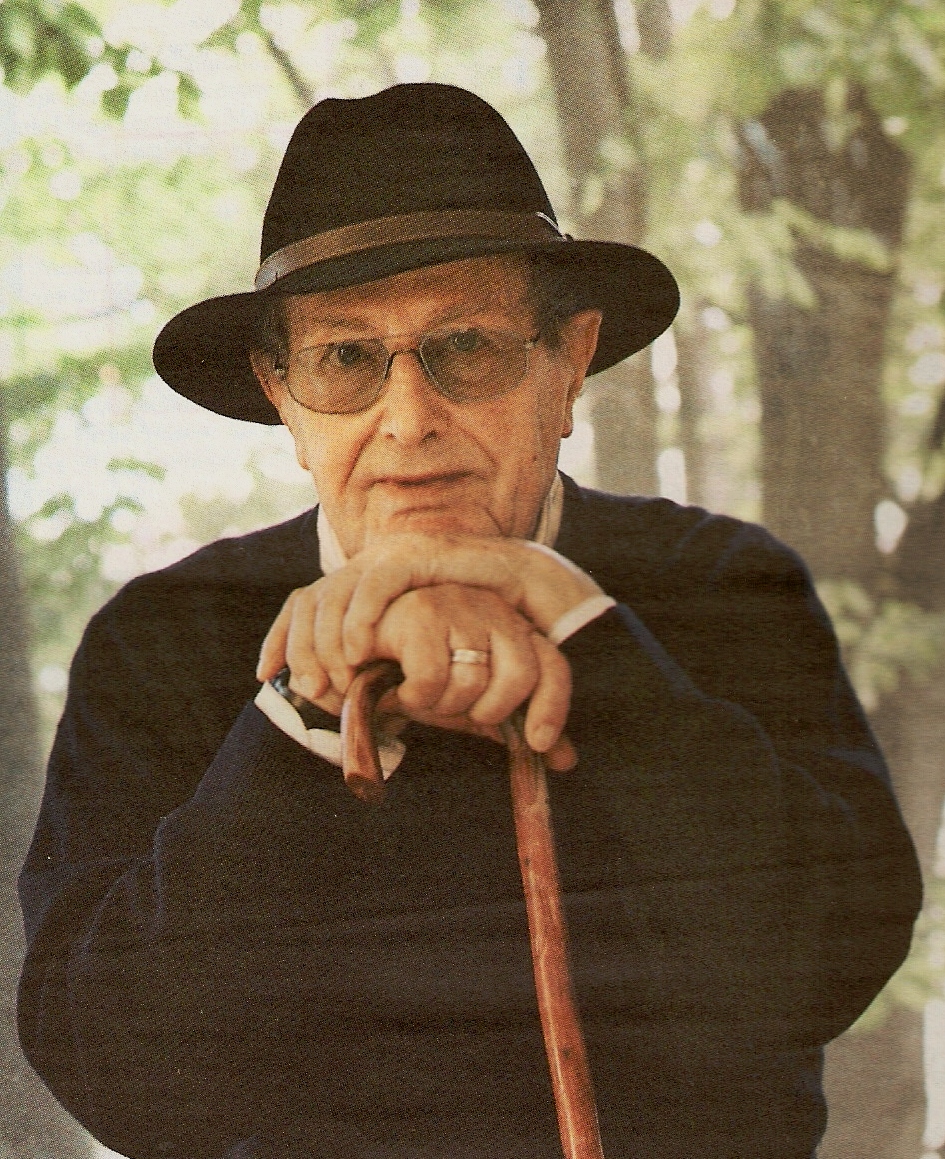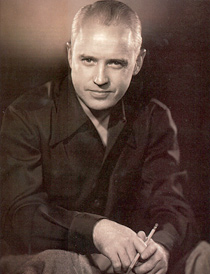From the Chicago Reader (March 21, 2003). I’m sorry that I’ve unable to find a single image illustrating The Last Conversation. — J.R.

The Murder of Emmett Till
* (Has redeeming facet)
Directed by Stanley Nelson
Written by Marcia A. Smith
Narrated by Andre Braugher.
Oporto of My Childhood
**** (Masterpiece)
Directed, written, and narrated by Manoel de Oliveira.
The Last Conversation
**** (Masterpiece)
Directed by Sally Banes
Written by Noel Carroll
With Galina Zakrutkina and James Sutton
Narrated by Patricia Boyette.
McLuhan’s Wake
*** (A must-see)
Directed by Kevin McMahon
Written by David Sobelman
Narrated by Laurie Anderson.
Echelon: The Secret Power
*** (A must-see)
Directed and written by David Korn-Brzoza
Narrated by Francois Devienne.
It’s notoriously difficult to evaluate the way most documentaries treat their subject matter, because one has to assess what’s included in light of what’s left out — something we aren’t usually qualified to do. I’m much more comfortable evaluating documentaries on how well they draw us into their subject matter and on how well they work as cinema. On these terms I can confidently say that I’ve seen and heard about a lot of exciting new documentaries recently, including an American work I really want to see, Charles Burnett’s Nat Turner: A Troublesome Property. Unfortunately few of these documentaries have been getting the attention they deserve, and if we don’t catch the first screening we rarely get a second chance. The films I want to discuss here are apt to disappear quickly, and they’ll never get the kind of notice the media lavish on two or three pets a year — this year’s favorite being Bowling for Columbine.
The five documentaries rated above are listed in order of their first appearance in Chicago this week: four are showing at the ambitious and bountiful new Chicago International Doc Film Festival, which has five separate venues, and one (Oporto of My Childhood) is part of the Gene Siskel Film Center’s European Union Festival. All can be considered works of historiography. Four of them also use techniques normally associated with fiction filmmaking — as do Stevie, another important documentary opening at Landmark’s Century Centre next week, and Burnett’s film, which uses seven actors to portray the title figure according to different historical interpretations.
Fiction has been a part of documentary filmmaking since before the 1920s, when Robert Flaherty got his Inuit subjects in Nanook of the North and his Samoan ones in Moana to do things in front of the camera they wouldn’t have done without prompting. Part of what makes this tendency more noticeable today is the apparent conviction — visible in such phenomena as reality TV and punchy CNN logos that build up a hokey, western-style “Showdown in the Gulf” over several months — that anything that’s real also has to be dramatic if it’s to capture our interest. Meaningful and significant no longer suffice. And so we get mood music poured over unrehearsed actuality, close-ups and melodramatic voice-overs that tell us when and how we’re supposed to feel, and sometimes even actors who take over when the real people aren’t available. All of which sounds callously manipulative.
Fiction and documentary mix in a different way in Sally Banes’s 20-minute The Last Conversation — a reconstruction of one of Sergei Eisenstein’s final works, a short ballet he choreographed based on the last scene from Bizet’s Carmen, preceded by a detailed account of how the reconstruction was done. It’s the only documentary of the five that doesn’t resort to fictional techniques, yet the subject it explores is a work of fiction. It concludes by showing the ballet twice: first an extended take with the camera kept mainly at a respectful distance, allowing us to grasp the work as a whole, then an edited version highlighting details and gestures. In this fashion we’re led to see how the “objective” presentation of a ballet can be achieved only through multiple vantage points — which involves the accumulation of subjective camera moves and positions.
Eisenstein is represented through drawings as well as photographs, and the ballet is delivered to us by editing as well as photography. The subjects of the other four films are represented in similarly diverse ways: the killers in The Murder of Emmett Till by photographs, newsreel footage, and two credited “voice actors”; Marshall McLuhan in McLuhan’s Wake through his voice and the voices of others; and Manoel de Oliveira in his Oporto of My Childhood by himself and by actors representing him at different ages.
The various ways in which people are represented in the four films reveal an unabashed merging of documentary and fictional techniques. Yet in these films, the differences in what might be called documentary etiquette and its moral implications may be much more important than the similarities.
I can claim some very limited outside knowledge about two of these five films. One is the Oliveira film, a memoir about the Portuguese city where he grew up, because I know a little bit about his life and his other films — which allows me to catch a few references and recognize a couple of clips. The other is The Murder of Emmett Till (showing on PBS on March 20), because at the time Till was killed, in 1955, I was a 12-year-old white southerner and I read a fair amount about the case afterward. This documentary taught me a lot about the impact the murder of the 14-year-old black Chicagoan — reportedly for whistling at a white woman while visiting relatives in rural Mississippi — had on black Americans then and later. But in at least a few significant particulars, the film deliberately avoids what the murder meant to white Americans. The first in-depth story of the case I read was an explosive article by William Bradford Huie, “The Shocking Story of Approved Killing in Mississippi,” which appeared in Look magazine a few months after the two murderers were acquitted. (It was expanded and appeared in book form, as Wolf Whistle, in 1959; the Look version is on the Internet on a site devoted to the documentary, along with a fascinating selection of some of the letters the article prompted.)
Huie paid the killers $4,000 for a detailed confession, after they correctly concluded they could give their account without risking further prosecution — as the film points out, President Eisenhower didn’t even respond to the telegram Till’s mother sent him requesting a federal investigation in hopes of an appeal. The documentary alludes to the payment and the Look article but doesn’t mention Huie by name. This is a relatively minor omission, though a telling one — Huie [see below] was a liberal white Alabamian who became notorious for exposing white racism (he was also the author of books adapted into such Hollywood pictures as The Revolt of Mamie Stover, The Americanization of Emily, and The Klansman). The major omission is the substance of his article, apart from a few physical details about the murder (dramatized by offscreen voice actors): Huie gave a much more detailed account of Till’s aggressive behavior in a store toward the young wife of one of the killers, of his earlier boasts to his pals that he had a white girlfriend in Chicago (they refused to believe him), and of his unapologetic and fearless response to his kidnappers, who claimed that they wound up killing him because he was so defiant.
It’s understandable that Huie’s article was disparaged at the time by members of the black community — because of the payment and because the image of Till as aggressive and defiant would have complicated his status as a martyr in 1955, long before Malcolm X and the Black Panthers. But I would argue that today Huie’s version can be read differently, as a way of extending Till’s martyrdom, though the makers of The Murder of Emmett Till rejected this approach, perhaps because it humanizes all the parties involved. Roy Wilkins wrote one of the unsympathetic letters responding to the Look article, characterizing the killers’ story as self-serving, but I think Huie’s account sounds more plausible than any other and it’s much more comprehensive. In short, the film rightly honors the defiance of Mamie Till in displaying her son’s mangled corpse to 50,000 Chicagoans, but it also arguably shortchanges the even more courageous defiance of her son. This makes it historically somewhat parochial, an impression bolstered by such easy and old-fashioned fictional devices as playing black spirituals on the sound track at every opportunity — which reminded me of the way white 1930s Hollywood usually represented the “soul” and suffering of black people.
I’m more sympathetic to the fictional devices of McLuhan’s Wake, a Canadian TV documentary, because they point the viewer toward a wider rather than a narrower response to its subject. I’ve always had mixed feelings about Marshall McLuhan. I tend to agree with the late Dwight Macdonald, who called McLuhan’s Understanding Media “impure nonsense — i.e., nonsense adulterated by sense,” though I’m sure this opinion is inflected by the 60s hysteria that elevated McLuhan to media visionary and philosophical guru of absurd proportions. (One of my teaching colleagues at the State University of New York at Stony Brook in the mid-60s taught a course in existentialism that used Understanding Media as its only textbook; he claimed it was the only thing he could get his students to read.) The inevitable backlash continues, something this documentary seeks to address.
I initially mistrusted David Sobelman’s script because it seemed hagiographic — he appeared to see McLuhan as Moses, Hegel, and Northrop Frye rolled into one. But it eventually incorporated plenty of criticism in a rich tapestry of viewpoints. (The credited chorus of voices includes those of Lewis Lapham, McLuhan’s son Eric, and Neil Postman.) It also effectively incorporates animation to depict the climax of Poe’s “A Descent Into the Maelstrom” — McLuhan’s ruling metaphor for how he chose to address media innovations he was temperamentally inclined to recoil from — and takes a brave stab at mimicking the method of McLuhan’s epigrammatic “probes” by deliberately leaving some of the chorus’s most tantalizing sentences unfinished.
McLuhan’s conservatism doesn’t always get the political critique it warrants. He may have anticipated Jean Baudrillard on the gulf war by speaking about the Vietnam war as a “fiction” because of its massive media coverage, but that didn’t make his screening out of real corpses any less offensive than Baudrillard’s. (This documentary does concede that the outbreak of World War II took McLuhan, then in his late 20s, completely by surprise.) Like the concepts they treat, the film’s metaphorical illustrations are often bold even as they skirt incoherence: the packaging of chocolate chip cookies is pressed into service to illuminate McLuhan’s thoughts about structural linguistics, and Chinese cooking is used to support (or confuse) some of his generalizations about tools. This doesn’t mean the simpler illustrations are necessarily better — I could have done without footage of the World Trade Center crumbling to accompany a bon mot from the master about terrorism. But cumulatively the pieces add up to a complex and mainly convincing portrait. And I can still hear McLuhan citing Kierkegaard, a line that’s the closest this documentary gets to a motto: “Life can only be understood backwards, but it must be lived forwards.”
David Korn-Brzoza’s Echelon: The Secret Power — an eyebrow-raising French documentary about the extent and nature of the massive surveillance networks that have grown around the world since World War II — is so enjoyable it might also seem untrustworthy, though only if you believe that fantasy, formal inventiveness, and speculation should be excluded from documentaries. I think that invention can enhance this form of investigative journalism, though I have to acknowledge that it does morally implicate one in the very processes being examined; Echelon acknowledges this complication when the narrator states, “Everyone’s at it, so you can’t denounce your neighbor,” and when it relishes such paradoxes as “Too much power can be synonymous with loss of control.” The film is packed with information that was new to me, much of it terrifying, yet it plays mostly like a Hollywood feature — The Conversation is among the likelier models. It’s filmed in luscious ‘Scope; often adroitly uses split-screen effects; includes melodramatic narration, jazzy computer graphics, and cloak-and-dagger music with echoes of the “power” theme from Bernard Herrmann’s Citizen Kane score; and is full of interviews (mainly with former employees of espionage agencies in Canada, England, New Zealand, and the U.S.) that are periodically interrupted or punctuated by electronic signals. When it’s over we’re left wondering how much of it is education, how much is embroidery, and how much is entertainment.
I’ve come to expect the unexpected from Oliveira, who will turn 95 in December, so I’m not surprised that the hour-long Oporto of My Childhood — made when he was 93, in between I’m Going Home and The Uncertainty Principle, and dedicated to his children — is the most advanced of the five documentaries in its use of fictional techniques. The freedom and unself-conscious grace with which he moves back and forth between past and present, fiction and nonfiction, is astonishing: he makes this capacity seem as simple as breathing and as natural as remembering.
Eschewing strict chronology — though early on he presents us with the ruins of the house where he was born — he shows us the earliest Portuguese film (a street scene), then the earliest Portuguese filmmakers (played by actors), along with contemporary hard hats occupying the same street. To accompany a current shot of the Douro River he uses the score of his first film, the silent Hard Work on the River Douro, which he started in 1929.
The city of Oporto, his birthplace, has been the principal Portuguese location for his films, so it’s natural that he includes clips from his first film as well as his first feature, the pre-neorealist Aniki-Bobo (1942), because he sees both as emblems of his youth, having made them during his 20s and 30s. In between the two films he acted in the first Portuguese talkie, became Portugal’s champion pole vaulter, won several grand prizes as an auto racer, and married his wife, Maria Isabel (who can periodically be heard singing a sort of lullaby throughout the film), though these early parts of his life are barely alluded to. He’s more interested in focusing on key images, music, and locations from the Eden of his privileged youth: letting us watch from behind as a conductor leads unseen musicians through Emmanuel Nunes’s Nachtmusik 1, letting us hear him sing the toreador theme from Carmen while we see the opera house where he first heard it, showing us actors playing him and his family in box seats at a local theater where his parents had season tickets, and finally giving us a scene from the play they watched, with him now playing the lead role — a burglar who’s doing his best to charm a woman whose house he’s broken into — which allows him to indulge in more singing, this time with mandolin accompaniment. Later his offscreen voice overlaps or echoes those of other actors playing him at various ages, one of whom is shown looking up at a man scaling a tall building — a spectacle we then see in matching archival footage.
“To recall moments from a distant past is to travel out of time,” says an early intertitle. “Only each person’s memory can do this. It is what I will try to do.” With this in mind, he turns document and artifice into user-friendly interactive tools in his personal historiography. Maybe if you have the right story to tell, the distinctions between fiction and nonfiction don’t matter much.








